[December 29, 2021 | Season 2, Ep. 5 | Barbara London Calling]
Barbara London: My guest today is Amar Kanwar, an Indian artist whose masterful films and multimedia work explore the politics of power, violence and justice. Born in 1964 in New Delhi, where he still is based, Amar started his career as a filmmaker. He gave up filmmaking for a while and became a researcher for occupational health and safety in the coal mining belt of Madhya Pradesh in central India. He turned to art making in 1990. He has been collected and shown internationally, with work that ties together the personal, the social, and the political. Amar, thank you so much for joining me today.
Amar Kanwar: Thank you, Barbara. It’s really nice to meet after such a long time.
[Continue reading for full transcript.]
Transcript
BL: I’m fortunate to have experienced your work firsthand at the Kochi-Muziris Biennale in Kerala, at the Marian Goodman Gallery in New York, and at three documenta exhibitions in Kassel, where I believe we first met in 2007. Your work is always stunning, visually and sonically, as you weave together critical issues that revolve around indigenous rights, gender, religious fundamentalism and ecology. To me, you’re an essayist in the tradition of the great French artist Chris Marker, who also used voiceover masterfully. I’m curious, who were your role models when you started out your practice?
AK: I think when I started out, I didn’t really have any role models. I didn’t even think I was going to be a filmmaker, so it’s not something that I conceived of myself becoming or making or growing into one, or anything like that. I was essentially just looking around and responding and seeing what was happening around me, and needed to find a way to express and to say what I wanted to say.
It’s true I saw several films, but I think I never imagined myself carrying on, making work or making films. In fact, I think I made my first or second film, and then I quit. That’s when I went to do this research in occupational health in the mining areas, and so on. I didn’t really think that I was getting into this or needed to follow a certain form or a person. I could say that I was quite easily inspired by a lot of films, but also by music, by people, by theater. In some way, I think I was more kind of struggling and obsessed with trying to figure out a way, first to perhaps survive and to make something that is meaningful, and to make it with as less pain as possible, and to be able to feel happy about what I make after I make it. I think those things really obsessed me. So, it’s not that I kind of followed somebody.
BL: Did you carry anything from that experience in the work that you did in the coal mining belt of Madhya Pradesh? Did you carry any of that forward with you?
AK: Yes, of course. I mean, I don’t think anybody could go to a mining area and not be impacted pretty much for the rest of their lives. It’s not that I thought that I was carrying it, or perhaps I understood the manner in which it impacted me initially. But I would say, that’s more than twenty-five, thirty years ago. It perhaps was the first time that I went for some extended length of time to rural India, to desolate India, to an area in which I didn’t know the people. Sometimes I didn’t even know the language. There were various communities, castes, indigenous communities and other kinds of communities. People who had become miners because they had either lost their land or they had lost their forests, or they had found jobs there. Being in a mining area actually meant that you could interact with various kinds of ethnicities and communities and languages and cultures, as well.
But apart from that, you could also see what does it mean to go underground? What does it mean to spend ten hours, twelve hours, ten years, fifteen years of your life under the ground, or live in shanty towns on top? I think it did impact me in many ways. It kind of reset me about the way I understood myself, the country, and how things should be. And perhaps at that time, maybe to a lot of people, it creates a sense of anger, as well a desire to do something about this.
It also makes clear many, many things. Where does the coal come from, and where does the electricity go? A lot of things you are able to kind of interconnect. And you begin to see how society works, how structures work and how hierarchies work, and how privilege works. Perhaps I may not have been articulating it in that sense immediately at that point. But I think a lot of that stayed with me till now.
Apart from that, I think it also taught me how to be in spaces that are unfamiliar or be with people that I do not know. I think that’s been quite critical for me for almost my entire life.
BL: Thank you. That’s wonderful to learn. Let’s begin with three of your early projects, created separately over a six-year period, all forming a trilogy of sorts. First is A Season Outside, 1997, structured around actual letters between Mahatma Gandhi and the public. The work explores the rhetoric of violence and nonviolence. Second is A Night of Prophecy, 2002, which looks at multiple poetic traditions in the subcontinent. And the third is To Remember, 2003, a short silent film that’s an homage to Mahatma Gandhi. What in your mind connects these works made 1997, 2002 and 2003?
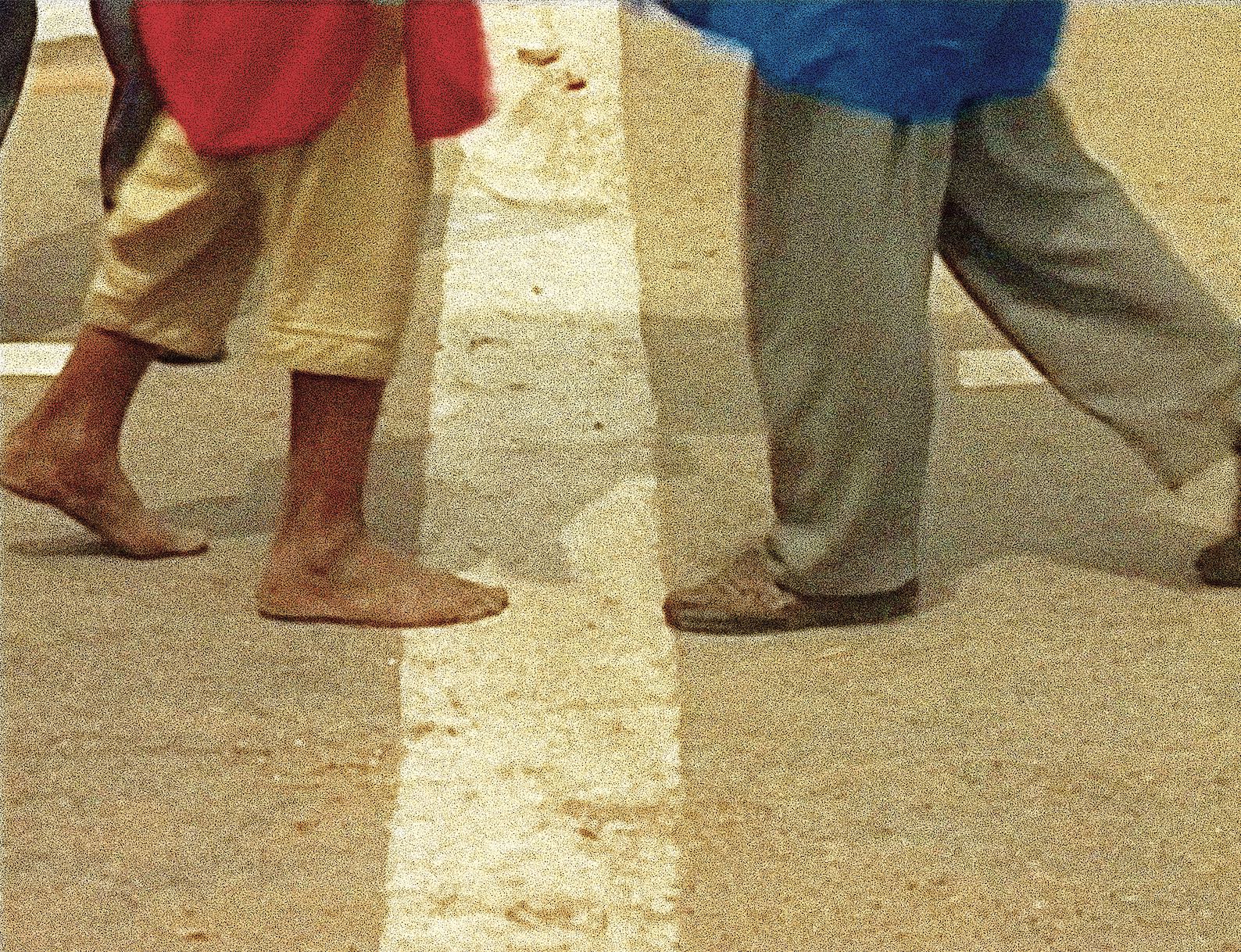
AK: When I started to work on the first one, A Season Outside, which was around 1996, and even when I worked on the second film, A Night of Prophecy, I didn’t at all think that these were films that were going to come together or were even going to form a trilogy, in that sense.
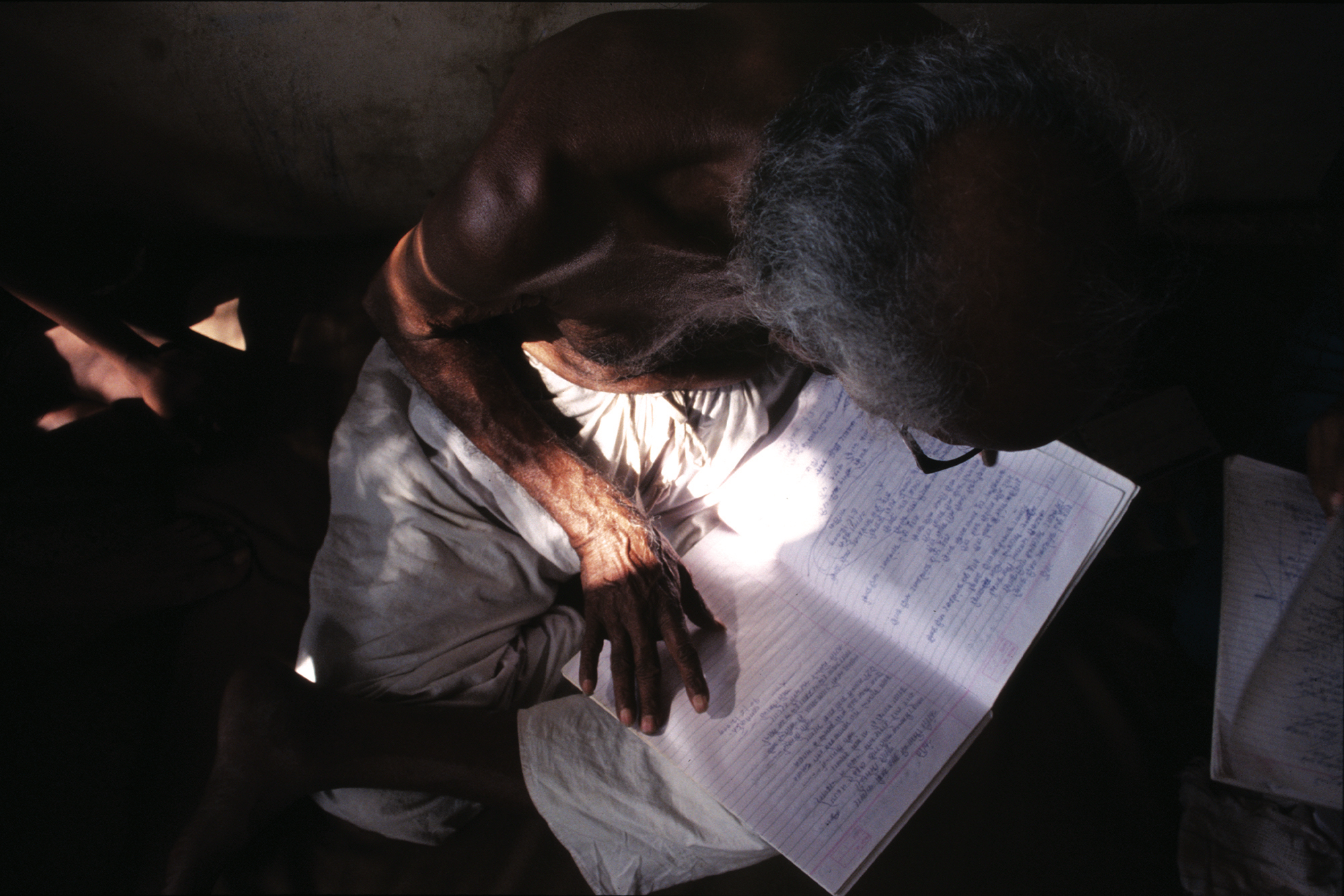
It was not my intention at all. When I did A Season Outside, there were a whole set of issues that were confronting me at that time. I also thought that it was going to be my last film. At that time, I didn’t think I was going to make another film. There were several reasons why I did that film. I got a chance to make A Season Outside, and the manner in which I did it, which ultimately became a kind of an essay with extended voice, with me filming in various parts of the country.
Following that, in the gap between 1997 and 2002, I had the opportunity to travel quite extensively all across the country. I was working on other films and on other projects, as well as researching quite extensively. This took me again for the first time into many parts of the country that I had never visited before. You would fly for a couple of hours, then drive for eight, nine hours, and then, perhaps, you needed to walk sometimes for a few hours to get to certain places.
These were completely new regions, even though I had heard about them. For me, that entire period, working, filming, seeing, talking to people, all of that brought me, I would perhaps say, very close to another side of the subcontinent, another side of the country. It opened up many things for me that I didn’t know, or I thought I knew but didn’t actually. At around that time, I began to feel also that there was a kind of despair that I saw all around. I also saw a huge, super articulation … that’s what I was referring to it, … from various people, communities, political struggles, historical organizations, individuals. There was a kind of super articulation of many views. But I felt, in some senses, everybody was articulating brilliantly, but nobody was really cutting across or cutting through or being able to comprehend each other.
At that time, I also began to feel that there must be some other way to understand, not just the country or what was happening, what was likely to happen, to understand the multiple kinds of violence that was taking place. So, A Season Outside, in many ways, was connected to the partition, to 1947, to the Tibetan resistance, to so many things, but essentially to the question of how does one respond to violence? That was what A Season Outside was, in the form of an essay, sometimes almost political, sometimes philosophical, sometimes analytical, sometimes thinking aloud.
It gave you a certain kind of understanding of how does one respond, relate, comprehend violence? And how does one kind of proceed in a realistic way, but as well as in a philosophical way? But the next few years of traveling, what it did was that it brought forth to me the need for finding another way to understand the multiple kinds of violence that exist or were ongoing in a sense. I wouldn’t say that this is peculiar to India or south Asia. I think if you were to be traveling across the breadth of the United States twenty years ago, you would be running into very complex processes of pretty extreme violence, some obvious to see and some not. So, I felt the need to find another way.
I had read a poem by Prakash Jadhav called Under the Dadar Bridge, and this was a poem that struck me. It was a very powerful poem. But what also struck me after reading it was that I thought I understood, but actually hadn’t [understood] what he was talking about. But when I read it, I also realized how much more I understood in an instant. In that sense, I felt there must be a way, there must be some other way to understand not just what’s happening, what’s not being necessarily openly articulated, but where it’s coming from, where it’s likely to go, and where is this entire kind of constellation likely to go?
I needed to find another way to kind of comprehend, another way to kind of express another way to cut through what I was earlier calling this kind of sense of super articulation taking place all over. How could one actually make something, say something, share something that cut through this articulation, and in a sense got into you, not just in your mind, but in your body and in your memory, and in many other ways opened up certain kinds of understandings?

I think that’s what led to A Night of Prophecy. It was about how do you understand the passage of time? And is it possible to understand the passage of time through poetry? If even momentarily one was able to understand the passage of time through poetry, and you could put your finger on it, then I should be able to predict, I should be able to see the future. So almost like a hypothesis, is it possible to understand the passage of time? Is it possible therefore, to be able to see the future?
And so, trying to kind of respond to this hypothesis itself, I started to travel quite extensively, sometimes planned and sometimes by chance, recording, recording and filming poetry in multiple languages. Of course, I chose certain kind of territories and fault lines and traditions. It’s not just poetry, but we are looking at [what] you could call, in many ways, poetry of resistance, poetry of expressing or emerging out from various social movements, as well.
Essentially what happened was that by the end of this film you had two films, both looking at violence from very different perspectives, as well as in very different forms: one an essay and one actually with no prose, but only poetry. I remember even when I was doing A Night of Prophecy, there was one poet who was quite hesitant for me to film him, which was right up in the beginning. When I said [to him], “I guarantee you that in this film there is no prose. I will not be saying anything. Nobody will be saying anything. Whoever will speak in this film will be speaking their own poetry or singing their own poetry.” I think that unlocked [the situation] and he agreed immediately. In fact, several people agreed.
In a sense, both films were dealing with more or less the same terrain of difficulty, of violence, of comprehending it, of dealing with it or expressing/ about it, but with very different forms. When it came to 2003, this was just after the anti-Muslim massacres that took place in the state of Gujarat in 2002, and this was something for all to see. It happened yet again in the subcontinent, and we had heard about it. We had seen it in many different ways, and yet it happened again. These were not necessarily what is described as spontaneous rioting. This was organized. And you could see it unfold and continue, and see the impact of it.
It’s at that time that I felt that there was a need to remember, not just Gandhi. January 30th was the day that he was assassinated in 1948. On the 30th of January in 2003, which is some months after these killings, I had the opportunity to show a film in one of the key cities where these killings took place. At that time, it was actually quite a tense city, where everybody was apprehensive of speaking the truth and saying exactly what had happened.
There were many other events, and many other people were presenting, and I had the opportunity ready to also present. I felt at that time two things. [One,] that on the 30th of January, 2003, on the day that he was assassinated, it was necessary to not just remember Gandhi, but actually to remember who assassinated him and to remember [what] that thought was and what that intention was, and also to remember the celebration, the people who celebrated his killing. And that political thought, that organizational movement, culture, campaigns, all of that was visible for us to see, decades later yet again.
The killings in 2003 were very linked to the killing of Gandhi in 1948. And it was that that I wanted to remember. But I wanted to remember without necessarily saying a word, without speaking, without arguing, without pointing fingers in a certain way. I was trying to find a way to do that. That’s when To Remember happened, which became a very short seven, eight-minute silent film.
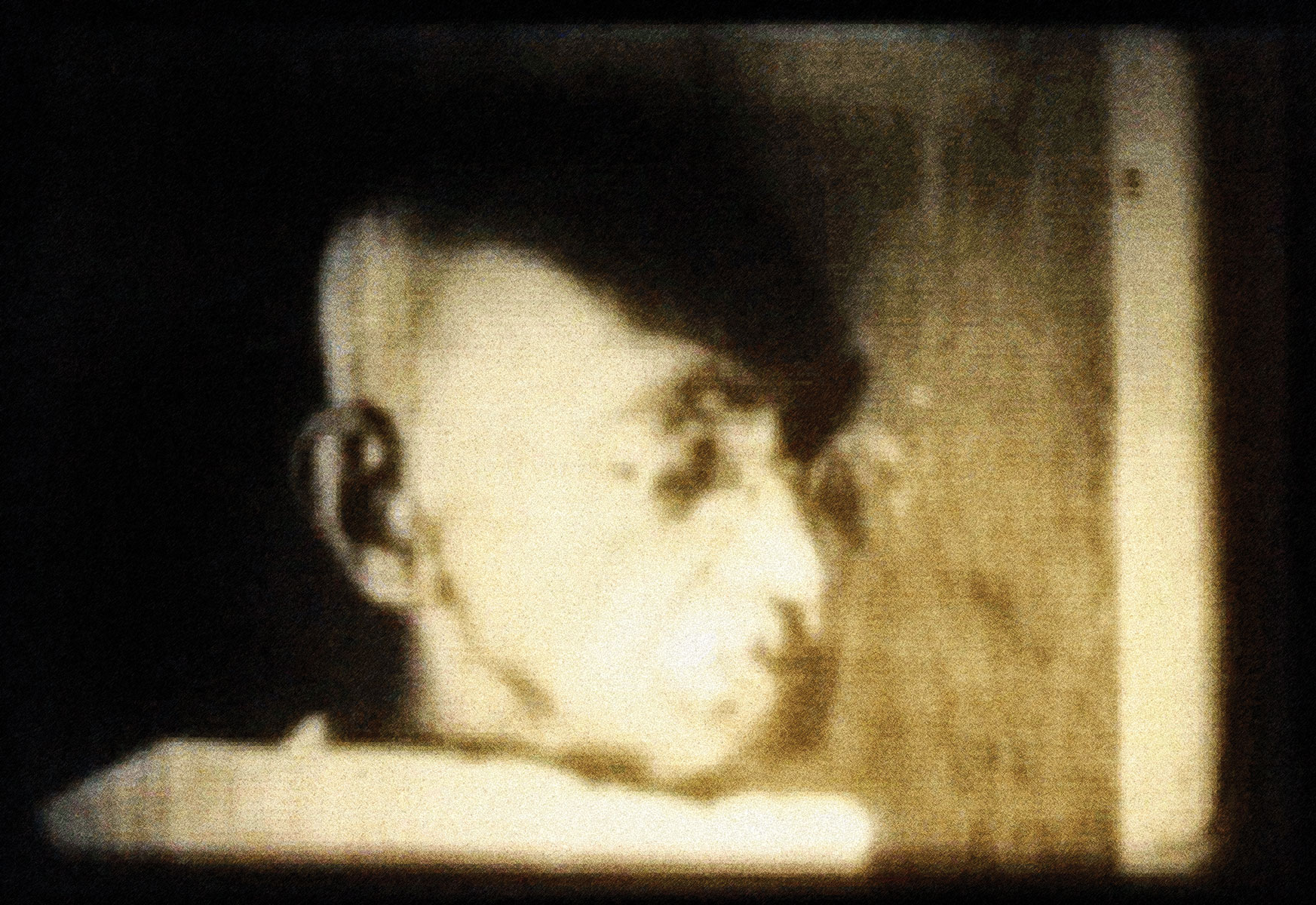
Just as an aside, it’s early October just now when we are speaking. A few days ago, 2nd of October, was Gandhi’s birthday. This is 2nd October 2021, and one of the top Twitter trends in India on the 2nd throughout the day was “Long Live [Nathuram] Godse,” the assassin. It’s very clear that there is not just a political establishment of a political organization, but also a fairly large number of people in this country who have celebrated massacres, continue to celebrate massacres, and also celebrate the assassin. This is something that we need to point out, not just condemn it. Condemn it, of course, but resist it and understand, and reflect upon it as well.
Even when I did To Remember, it’s not that I thought that I was making a trilogy. It’s just that when it ended, I realized that I had been pretty much dealing with the same terrain, the same kind of issues that actually are central issues to the United States even today, or elsewhere. I had ended up, across eight, nine years, doing it through essay, through poetry, and through silence. That’s how they came together. Sometimes I do feel that A Night of Prophecy also contradicts A Season Outside, in how it understands what’s happening, and so on. They did get entangled with each other in different ways.
BL: Thank you for that generous explanation. Let’s move on to The First Torn Pages, 2004 to 2008, your 19-channel installation that has the same intimacy one feels when holding and reading a book. The installation consists of videos that are small back projections that go onto framed sheets of paper placed on shelves, in patterns that resemble an expansive moving image book. The installation was made in honor of the Burmese bookshop owner Ko Than Htay. I’ve heard the work described as taking the viewer into the archipelago state of mind. What is the backstory with this work?
AK: In 2002, 2003, and 2004, I had very close friends who were lawyers, civil rights lawyers who had been working for many years, quite amazingly representing and defending several Burmese students in exile, in prison in India and elsewhere. Because of this friendship, I learned a lot more about the Burmese resistance and I was struck by many things. I was struck by the student ‘incredible courage and the strength of their struggle. I was also struck, yet again, by my own lack of awareness.
Here was, for four or five decades, probably the most amazing student movement, four or five generations, one after another, resisting a military regime with very brutal consequences to them and their families. Pretty much at the same time, when we were students, we didn’t really know much about them. We were politically conscious and active in our own areas at that time, but hadn’t in any sense found the ability to support, or express solidarity, or do something in relation or in support of this struggle that was happening not very far away from where we lived. I think that’s what prompted me to do something, however small it may be.
One of the other things is that when you look at social movements or political struggles, or actually even if you look at your own life or anybody’s life, there is a need for a coherent narrative to be expressed; everything needs to be tied up together. Somebody ties up this narrative; you accept it, it makes sense, and then you carry on with that narrative. After a while, you forget that somebody handed you this so-called coherent construct of what happens and what is happening, and who is doing what and so on. You almost kind of forget what you’ve forgotten after a while.
What I felt was that in the little experience that I had of being part of larger processes and larger social movements is that there is a lot that’s not said. There’s a lot that’s not clearly expressed. There are many silences, many gaps, many under stories, and they need to be understood in other ways, not necessarily in a kind of fixed narrative or not necessarily in a language that you easily understand. Burma is not Burma, actually. Burma is several ethnic nationalities, several communities, almost several republics. And they have different traditions, cultures. There are things that bind them together, but there are things that separate them, sometimes even in antagonism with each other. They work together, in a sense, resisting a military regime, but this was not just one thing. It was many things inside it.
I think this was just the more of an organic process. Over a period of time, I did a little bit of work. I did another little bit of work. I made another short film and I kept on going until I reached a point when I felt that there needed to be a way to somehow understand these four, five decades, not just inside Burma, but of repression, of hiding, of traveling, of being an exile and migrating across the world, right from Fort Wayne to Tokyo, to Norway, all across the world. These students left sometimes [their home] at very short notice and never returned for twenty, thirty years, essentially to protect their families.
How does one understand this, such a huge resistance? But how does one understand the meaning of such of what it does to people’s lives? And how do you fight? You can’t stitch this together in one single story. That’s why you need it to be in a certain state of mind, where you could open up other ways of understanding this thirty, forty years of resistance across the world. That’s why the work also began to disintegrate, and became different parts, almost like fragments; and that if you stayed together for a little while, you could actually see the interconnections and get a sense of what it really meant. What does this courage mean? What does this suffering mean? What does the length of this fight mean? And so on and so forth. I think that’s why it became what it became. It’s a fluid space that allows you to understand more than what somebody may tell you straight away.
Of course, at a certain point some years ago, you had a situation where in Burma, in Myanmar, the military regime was displaced and you had a democratic government in power under Aung San Suu Kyi. But as we have just seen in the last few years, the situation in Myanmar has deteriorated, and we are back with a very brutal military takeover once again in Myanmar, with almost a kind of repeat of what happened before. But it’s that this time, I think, the resistance is very different. I think they have learned a lot and they have been watching other social political movements in the last ten years. Technology is different. The internet is working in a different way. There are a lot of factors that change the way the resistance is taking place just now. Nevertheless, we are back to square one, in a certain way, with the military regime in power in Myanmar.
BL: So true. I’m going to move on. When I experienced your quite immersive multi-channel projection installation The Lightning Testimonies at documenta in 2007, I was struck by your command of time and space. There were multiple projections in a fairly large room, and I believe another one was just outside that big space. You looked at another very weighty subject, in this case the history of conflict in the Indian subcontinent through the experiences of sexual violence. Also you’ve said that you have a compass that keeps spinning you into zones of conflict. I’d love to know what strategy you have for approaching such sensitive topics in your work.
AK: I don’t think I have a strategy. I think I move from situation to situation and everything kind of emerges from where I am at that point in time, partly from my abilities and partly from what I’m trying to address. When I was working on The Lightning Testimonies, which was about sexual violence spread over four or five decades again, starting from the partition of India in 1947, I had made one decision.
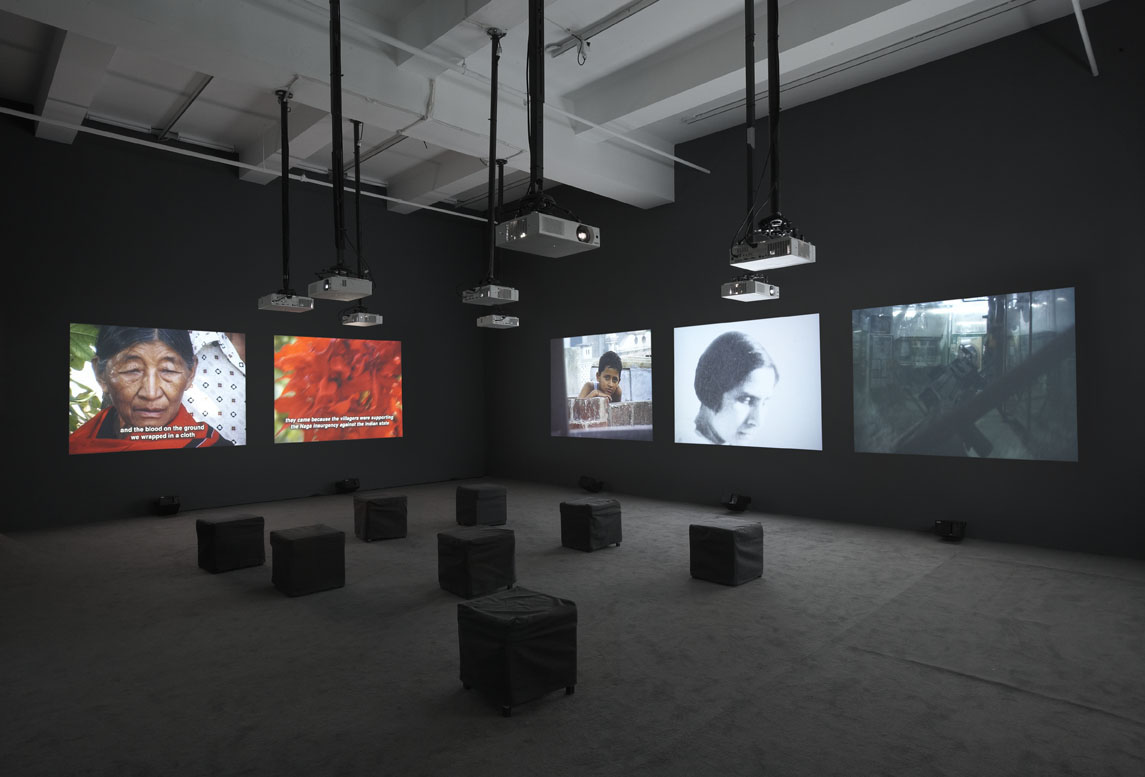
That is, I wouldn’t be going to a survivor or a victim to gain an understanding of what happened, either in the film or in the research. I would try to understand what happened, and more important, why it happened and why does it continue to happen in any other way possible?
I think this decision itself created a set of obstacles because, then how do you find out? How do you understand? Which meant that I needed to find a method, I needed to find a way to figure it out, which meant traveling and speaking to people. Even if one began to understand a little bit, immediately the question that came was, how do you tell this, because it’s impossible to actually describe or show. And how do you even tell something that somebody does not want to talk about or something that is hidden. But hidden in a certain way that you can find it if you know how to look for it. How do I know how to look for it? How do I know how to listen to different types of silences? How do I follow the skips in the sentences and the gaps between the words? How do people at the bottom of a hill archive, and how do people on top of the hill archive, and how do they recall?
I found that there are different ways and methods in which people relate to pain, relate to trauma. Sometimes it’s buried. Sometimes it’s hidden. Sometimes it’s camouflaged. Sometimes it’s retold in another way, and so on and so forth. Sometimes it could be in a stone or a tree or a mark or a color or a weave or a pattern, and so on. These were things that I just kept asking and learning, and subsequently to film them in bits and pieces to put together. But if I were to move to another territory or another subject that I may have worked on, it demanded its own way of telling, whatever may be possible. Burmese or the Myanmar resistance students’ movement asked for another way to respond.
So, I tried to find another way. This also led me to the whole question of evidence that the Burmese resistance was collecting in many different ways, for many decades, in many countries, but still putting it together so that one day there would be justice in a sense. How does this evidence get collected? How does one show it? How does one understand it? This itself asked for a method and a form of its own. So, I think that’s how I go, just by testing and checking and asking people. And people tell you. I find people tell you what to do and how to do, and how to be and how to talk and how to listen.
BL: You’re a genius in terms of approach. Let’s move on to your work Such a Morning, an 85-minute single channel fictional narrative that follows two characters, mainly a professor who grapples with blindness and a hallucinatory world. I’m curious, what’s behind the theme of darkness, which is a recurring metaphor in your work?
AK: I think by maybe around 2015 or 2016, perhaps some would say a bit late in the day to realize this, but I began to come to this conclusion that something was seriously wrong all around, and probably not fixable in the manner in which we were fixing it. If you looked at Syria, even if you looked at Trump, or if you looked at the Modi regime, or you looked at Putin, if you looked at Gaza… wherever you looked, and the more you went into it in detail, you felt that it became quite … or even if you looked at the ecological crisis, of how one actually is, self-destructing at this space, knowing fully where exactly what we are doing.
Looking at all of these things, I began to feel that there was a need to step back, to actually halt and get out of these frameworks of right people, wrong people, good people, and so on. Also, to try and understand how could people, or… how could you try and understand this desire for violence at one level, to understand quite intensely subjective, selective indifference and prejudices, to understand the fact that no matter how educated or intelligent somebody may be, they were still celebrating various forms of violence, or ignoring certain forms of violence, and so on. I felt that there was a need to step back and reflect, but what could be the way to do that? How does one reflect? I thought, if there was a way for me or for anybody, for that matter? In this film, the professor quits his job and he steps into a zone of darkness. He decides to stay in the zone of darkness for a certain period of time to understand darkness, but to also prepare for darkness when it comes.
But essentially what it is, is also to find a way for another vision. What could you possibly see from the heart of darkness? Would you be able to see another way of functioning, another way of being, another way of reconceiving? I think that was the basis. I was tired of arguing. I felt there was no need to argue anymore and one needed to step back.
So, to answer your question specifically, I would say it was about stepping into the heart of darkness and waiting. When you wait and look at darkness, you see that you don’t see anything. You need a bit of light to actually see darkness. And then you see various kinds of darkness and you see various kinds of light. And over a period of time, that’s when the professor begins to hallucinate. Through those hallucinations, another character appears and many things happen, but ultimately the professor does get out. When he gets out, one of the first things that he does is to write a series of letters.
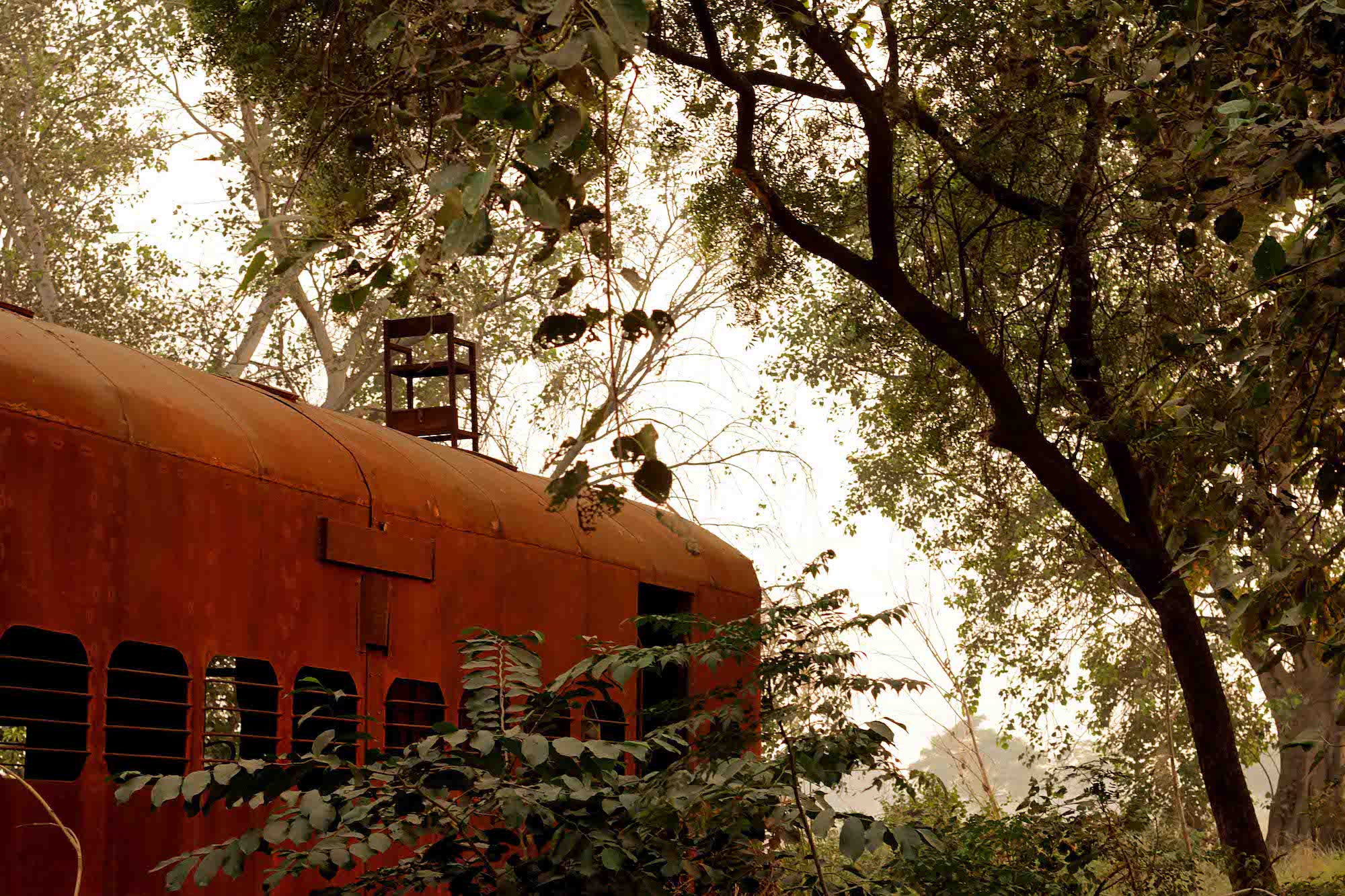
The first one is when he says that during this time inside darkness, he has identified, so far, forty-nine kinds of darkness, which is a letter that he writes to the chancellor of his university. He says that until and unless we research and reconfigure and learn about these forty-nine kinds of darkness, he would not be able to teach again. In a sense, he’s also called for a new curriculum and a new syllabus and a new way of comprehending and planning, as to how one wants to live, not necessarily in an educational situation or an academic situation, but just your own life.
BL: Thank you. Such a Morning is so beautifully shot. As he goes into the darkness, goes through this experience, he’s inside what appears to be a trailer.
AK: It is a trailer. We made a trailer. This was probably the scariest thing that I had embarked on, ever. To make a trailer of life size in metal, place it in a wooded area, and then to move into it and start filming. It sounded like the most absurd thing to do, to get into darkness physically. But yes, we did that. The professor lives inside this abandoned trailer in a little forest.
BL: Let’s turn to a different forest, The Sovereign Forest, which is a multimedia installation that you launched in 2012. You created the installation in collaboration with media activist Sudhir Pattnaik and designer filmmaker Sherna Dastur. It’s an ongoing project that reflects your ingenuity as an artist, one whose practice evolves, often with technology. It reflects your commitment as an activist. I believe you’re developing Sovereign Forest as an online educational course, as well. The work developed out of the political and environmental conflict in the resource rich and largely tribal Indian state of Odisha. I think you were involved when we met in New Delhi in 2013. You’ve noted that the work is a creative response to crime, politics, human rights, and, in particular, ecological crisis. I’m wondering, what do you see as the artist’s role, and the art world’s role, in general, in confronting the climate crisis?
AK: I don’t think about how the art world should confront or how anybody else should confront climate change. The reality is pretty clear to us. Our soil is poisoned. Our rivers are poisoned. Our forests are being destroyed and turned into monocultures. Our food is destroyed. So, in that sense, it’s pretty obvious. It’s upfront. It’s absolutely clear before us. And from the point of view of an artist, what I could say, again not in a prescriptive sense. I’m not saying this for anybody else. I would simply say that for myself, I felt that I needed to understand how could you willfully continue to do this? How could we as a society or a system? How could a crime, as what is central to The Sovereign Forest, how could a crime continue to exist, even when there is enormous amount of evidence available?
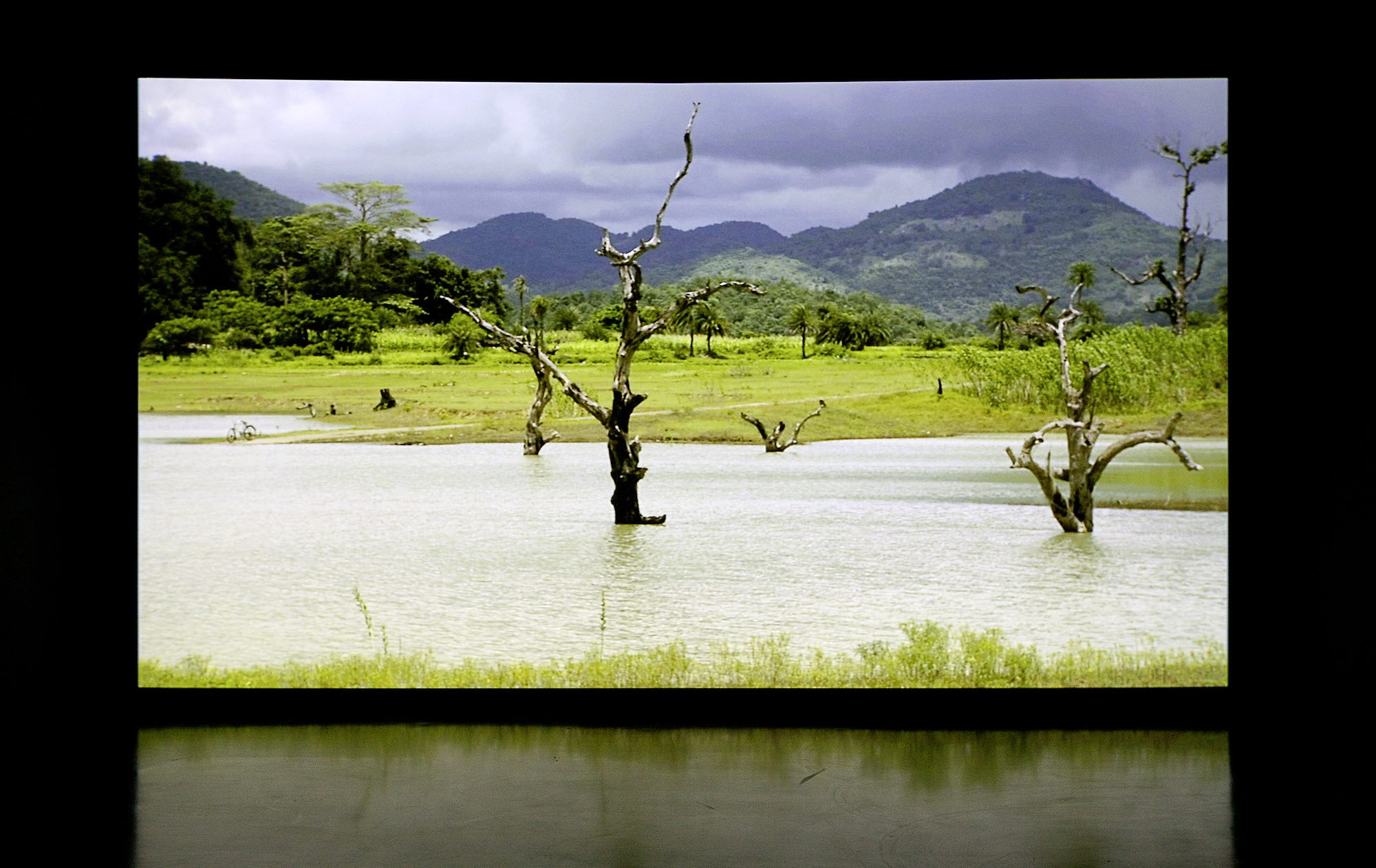
Is the crime not visible, or is the evidence not visible, or are both invisible? Or are both totally visible, but we don’t know how to see it?
Or is the evidence that’s being placed on the table actually quite incorrect? Maybe there’s another set of evidence that we need to see, which would actually make us understand the scale and meaning of this crisis. If we were to understand the scale and meaning of this crisis, and the loss and possible loss or the multidimensional loss that is taking place, because it’s not just earth and soil and water and so on, but it’s about lives and cultures and traditions and languages and music and so many things that are interwoven with the earth. Maybe we need some other kinds of evidence, which then pushes you to the question of the law. If the law is defining what is valid evidence and what is invalid evidence, then maybe something is wrong with the way the law is defining evidence.
Maybe we need other tools, other methods, other ways of comprehending what exactly is happening; because it’s happening, but we don’t seem to be able to really understand the extent of what it means. I think in that sense, from the point of view of an artist, it’s about finding other ways to comprehend, opening other senses, realizing where one has gotten attenuated in a certain way. Perhaps getting a sense of at least a part of this destruction, I think that’s what I would say is the best that at least I can try to do.
BL: I have to say you’re quite remarkable. Now moving on to my very last question, which is something that I’m asking each of my guests. Given the ups and downs of the last eighteen months and the struggles we’ve all faced in trying to adapt, how has technology affected you and your practice? You can take this, the recent past, to answer how are you going to move forward?
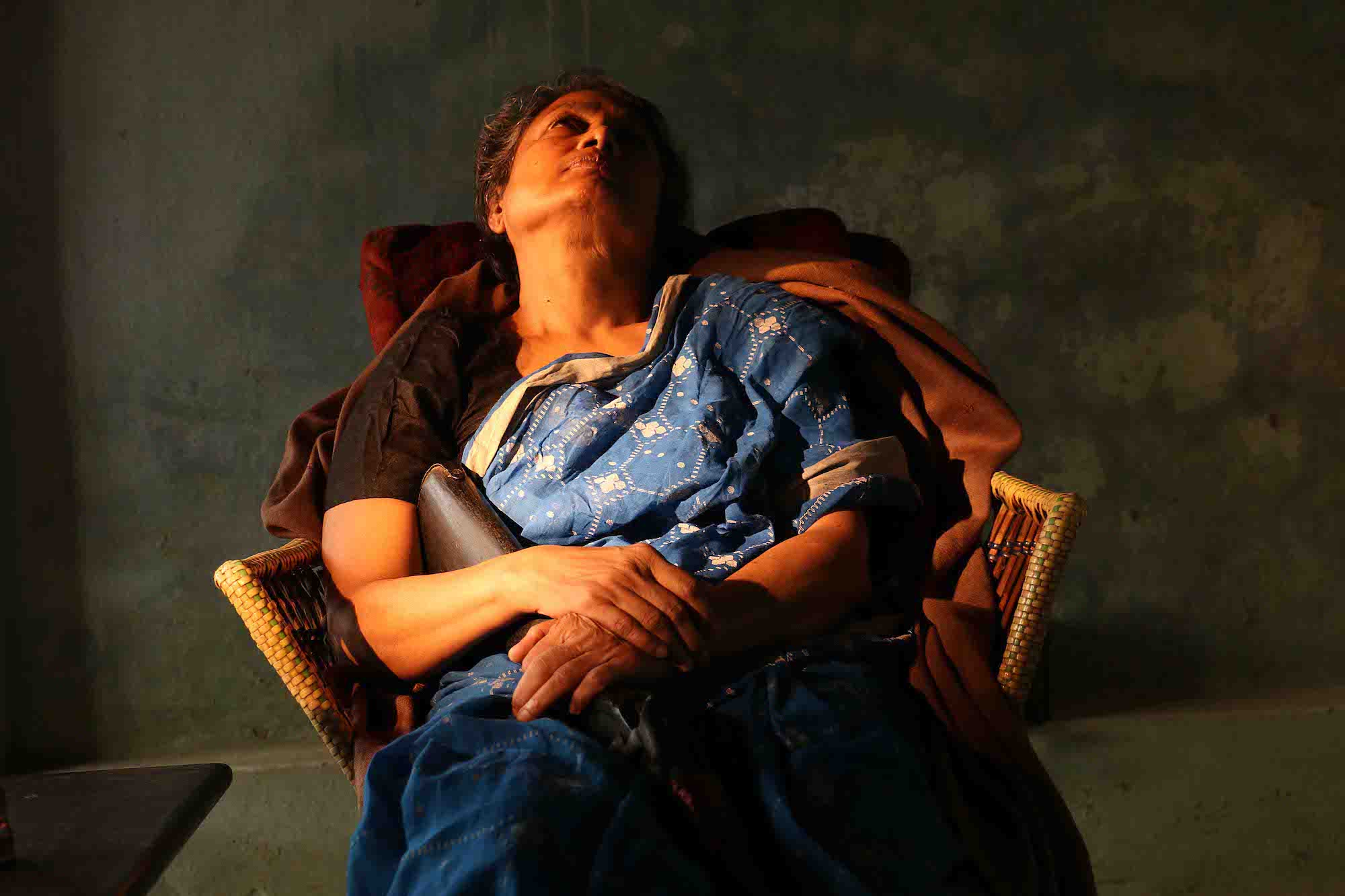
AK: I would connect this with the making of the film Such a Morning. In 2015 or 2016, it became pretty obvious to me, and perhaps obvious to everybody else, as well, that we had entered into a technological age of another kind, which was impacting almost our complete lives, but also our inner lives and the way that we think. It was not just about tools or making things, but this was mind manipulation, behavior manipulation at a scale unseen before, and perhaps very difficult to resist, as well. It had many powerful forces coming together, working in tandem for this to happen.
So, I think for me, what became quite clear was that I needed to do two things immediately. I needed to protect myself from this, and I needed to find a way to hack it, to fight back. But before I could even do that, I needed to protect myself. So, I thought, what is technology’s impact? I would say that it just suddenly made me all the more acutely aware of protecting myself and finding ways of protecting my mind and my body, and my own space and my friends, and so on, and creating a space and a world and a territory of operating, which is as buffered as possible and as safe as possible from this quite violent technological take all over. And at the same time, in the same way that the professor stepped into the train, the lockdown I think helped me to figure out how I could try and find ways to block this, to fight back, to create alternative ways of being and using technology that could help us survive better.
BL: Thank you so much. Thank you for your eloquent answers to my questions. Thank you very much.
AK: I think all of us are realizing this now, that we need to disconnect. We need to find a space where we are not invaded, and to keep our inner selves intact. I think for me, that’s how I would really react to this question of technology. What we are probably going to see in another twenty years, we may not have seen the scale of change in the last thirty, forty years. In some sense, one needs to equip oneself to be able to deal with this. I think that’s really uppermost in my mind just now.
BL: Thank you so much.
AK: Thank you very much, Barbara.
—
Support for Barbara London Calling 2.0 is generously provided by the Kramlich Art Foundation.
Be sure to like and subscribe to Barbara London Calling so you can keep up with all the latest episodes. Follow us on Instagram at @Barbara_London_Calling and check out barbaralondon.net for transcripts of each episode and links to the works discussed.
The series is produced by Ryan Leahey, with production assistant Vuk Vuković. Web design by Vivian Selbo. Special thanks to Lee Ranaldo for graciously providing our music.
This conversation was recorded October 6, 2021; it has been edited for length and clarity.
Images







